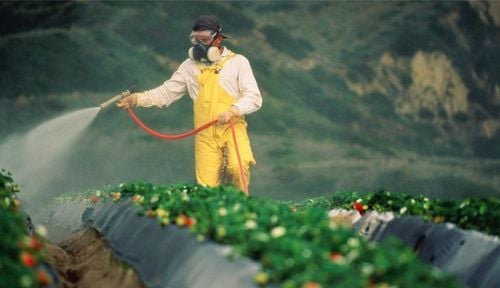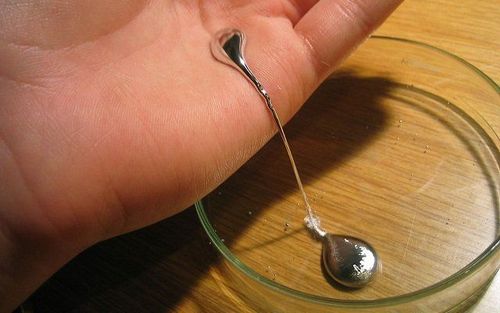This is an automatically translated article.
Children are not adults, so they are especially vulnerable to the toxic effects of chemicals. Children's exposure to chemicals at critical stages of their physical and cognitive development can have serious long-term health consequences.
1.Why are children vulnerable when exposed to hazardous chemicals?
The recognition that children are particularly sensitive to toxic chemicals was initiated in 1993, when the National Academy of Pediatrics' report on Pesticide in the Infant Diet was published. birth and children. The studies cited in the report show that children differ quantitatively and qualitatively from adults in their sensitivity to pesticides and other chemicals.
Prior to the publication of this report, virtually all environmental policy in the United States focused on assessing risks to the “Average Adult” and paid little attention to the individual risks of infants, children or other vulnerable groups in the population.
The report has created a paradigm shift in the approach to health and environmental policy. It led to new legislative and regulatory initiatives to better protect infants and children from environmental health threats and, in particular, was influential in changing drug regulation. pesticides and pharmaceutical chemicals.
The report identified four differences between children and adults that contribute to children's increased susceptibility to chemicals in the environment.

Trẻ sơ sinh sáu tháng tuổi có thể uống nước gấp bảy lần mỗi pound so với người lớn
First, children are exposed to more harmful chemicals than adults in terms of body weight. Six-month-old babies drink seven times more water per pound than adults. Children absorb 3-4 times more calories than adults. Infants' air intake per pound is twice that of adults. These differences result in children's disproportionate exposure to harmful chemicals in the air, food, and water. In addition, children's behavior of touching their mouths and playing on the ground increases their exposure. Second, children's metabolic pathways are immature, and their ability to metabolize toxic chemicals is different from that of adults. In some cases, infants are at a lower risk than adults because they are unable to convert absorbed substances into toxic forms. More commonly, however, children are more vulnerable because they lack the enzymes needed to break down and remove harmful chemicals from their bodies. Third, a child's early development is easily disrupted. Rapid, complex, and highly amplitude development occurs during prenatal life and in the first years after birth, continuing to develop but at a slower rate throughout childhood through adulthood. puberty. In the brain, for example, billions of cells must form, move to their designated locations, and establish trillions of precise connections. Likewise, the development of the reproductive organs is guided by a complex and precisely timed sequence of chemical signals and is shaped by maternal and fetal hormones. Recent pediatric and developmental toxicology research has elaborated on the concept of “Vulnerability window period”. These are critical stages in early development when exposure to toxic doses of chemicals even for a few minutes, although these levels have no adverse effects in adults, can disrupt development. organ formation and lifelong dysfunction in young children.

Nếu trẻ sơ sinh bị tổn thương các tế bào trong não có thể tăng nguy cơ thoái hóa thần kinh như bệnh Parkinson ở tuổi trưởng thành
For example, if the cells in an infant's brain are damaged by lead or pesticides, the consequences can include developmental disabilities by age 11,13 and possibly an increased risk of neurodegeneration, such as Parkinson's disease, in adulthood. If inappropriate hormonal signals are sent to the developing reproductive organs by a synthetic chemical endocrine disruptor, such as certain chemicals commonly found in household products, plastics and cosmetics (phthalates) and on clothing (flame retardants) can cause lifelong impairment of fertility. These windows of vulnerability do not equate to adult life.
Fourth, children have more time than adults to develop chronic diseases. Many diseases are caused by toxic chemicals, such as cancer and neurodegenerative diseases, which scientists now understand as this pathogenic process progresses through multi-stage and multi-step processes. years may begin with exposure during infancy. From this insight has spurred new research to determine how early environmental influences can affect health during childhood and throughout a person's life.
2.Children exposed to toxic chemicals cause what diseases?
There is strong and growing evidence that toxic chemicals are an important cause of many illnesses and dysfunctions in children. This recognition first appeared in studies of lead and mercury. In recent years, as research strategies in environmental pediatrics have improved, the pace of scientific discovery has progressed faster and new associations have been discovered. Eg:

Tiếp xúc với thuốc trừ sâu chlorpyrifos trước khi sinh làm tăng nguy cơ trẻ có thể mắc chứng rối loạn phát triển lan tỏa
Prenatal PCB exposure is associated with reduced intelligence in children. PCBs are chemicals that are difficult to break down in the environment, accumulating at high levels in some fish species. Human exposure is essentially the result of mothers eating contaminated fish before and during pregnancy. Although PCBs are no longer manufactured in the United States, they have been widely used for many years in the manufacture of electrical equipment such as transformers, and they continue to be an important contaminant today because they are difficult to obtain. degrade in the environment and because they accumulate in the tissues of organisms in the food chain. Prenatal exposure to the pesticide chlorpyrifos is associated with reduced birth circumference and growth retardation. Small head circumference at birth is an indicator of brain growth retardation during pregnancy. Chlorpyrifos has also been linked to pervasive developmental disorder, which is a form of autism. Boys exposed in the womb to phthalates, a chemical compound found in plastics, cosmetics, and many common household products, appear to have an increased risk of behavioral abnormalities like the disorder. attention deficit hyperactivity. Prenatal exposure to bisphenol A, a synthetic chemical used to produce polycarbonate plastic, is associated with behavioral abnormalities in girls. Prenatal exposure to brominated flame retardants is associated with cognitive impairment, and prenatal exposure to arsenic and manganese is associated with neurodevelopmental impairment. The incidence of asthma is increased in children exposed to secondhand smoke and fine particulate air pollution. The risk of death from respiratory diseases is increased in infants exposed to fine particulate air pollution. Prenatal phthalate exposure has also been associated with shortened anorectal distance in boys, which is an indication of feminization. Prenatal exposure to perfluorinated chemicals (perfluorooctanic acid and perfluorooctane sulfonate) used to make non-stick pans and anti-stain agents has been linked to reduced birth weight and decreased head circumference in infants.
3. How to protect children against the risk of chemical poisoning?

Khi sử dụng thuốc trừ sâu nên cho trẻ em và vật nuôi tránh xa
Keep pesticides and other harmful chemicals away from children
Store food and garbage in airtight containers to prevent insects from entering the home. Use baits and traps safely; Place baits and traps where children cannot reach them. Read the product label and follow the instructions. Store pesticides and hazardous chemicals where children cannot reach them and never put them in other containers that children might mistake for food or drink. Keep children, toys and pets away when using pesticides; Do not let them play in fields, orchards, and gardens after a pesticide has been used for at least the time recommended on the pesticide label. Wash fruits and vegetables under running water before eating, and peel them before eating when possible. Protect children from chemical poisoning
If a child has swallowed or inhaled a hazardous product such as household cleaners or pesticides, or gets it in their eyes or on their skin, call 911 if they are waking up, having trouble breathing, or having a seizure; Check the label for instructions on how to give first aid or get the child to the nearest Medical facility. Make it easier for children to breathe
Don't smoke and don't let others smoke in your home or car. Keep your home as clean as possible. Dust, mold, certain household pests, cigarette smoke, and pet dander can trigger asthma and allergy attacks.

Khói thuốc lá có thể gây ra các cơn hen suyễn và dị ứng cho trẻ
Limit outdoor activity on particularly harmful air pollution warning days. Walk, bike, and take public transport. Protect children from lead poisoning
Get your child tested for lead levels. Check for lead paint if your house is built too old. Wash children's hands before eating; Regularly wash bottles, pacifiers and toys. Wipe floors and windows to protect children from dust and lead-prone paint chipping, especially in older homes. Protect children from too much sun
Wear a hat, sunglasses and protective clothing. Use sunscreen with SPF 15+ for children over six months; Keep infants out of direct sunlight. Limit midday sun exposure – the sun is at its highest between 10am and 4pm. Keep children away from mercury
Eat a balanced diet but avoid fish with high levels of mercury. Replace mercury thermometers with digital thermometers. Do not let children handle or play with items containing mercury. Never heat or burn mercury. Children need to provide enough elemental zinc/day for them to eat well, reach the correct height and weight and exceed the standard. Zinc plays a role in affecting most biological processes taking place in the body, especially the breakdown of nucleic acids, proteins... Organs in the body when zinc deficiency can lead to a There are a number of diseases such as neurological disorders, irritability, etc. Therefore, parents need to learn about the role of zinc and guide them to appropriate zinc supplements for their children.
In addition to zinc, parents also need to supplement their children with other important vitamins and minerals such as lysine, chromium, B vitamins,... errands.
Please regularly visit Vinmec.com website and update useful information to take care of your baby and family.
Articles refer to sources: babycenter.com, healthaffairs.org, epa.gov













